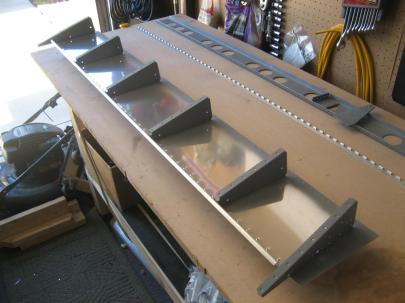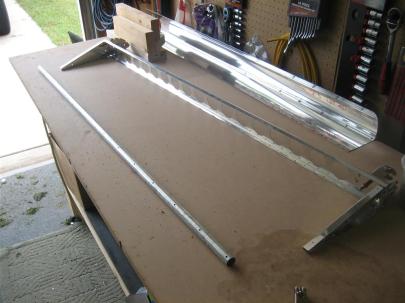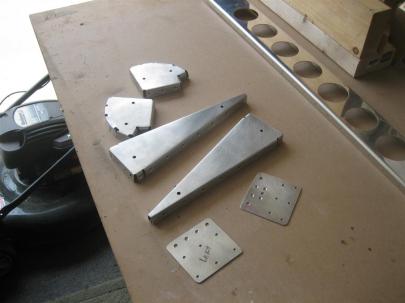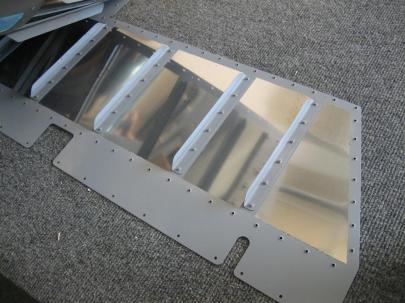Alright, another night in the workshop. And, tonight was a super-night. Not because I’m super-rv7-builder (I am), but because my cousin Taylor came over to learn about the airplane.
After a little talking, I put him to work.
First task, empty out the LP4-3s that just arrived from Van’s (my first airplane package in awhile) into one of my empty yellow bins.
He quickly started exceeding my expectations though. To get going on this flap, the next few steps are tedious, but the two of us working helped to lessen the pain.
We focused our attention on prepping the right flap lower skin deburring, dimpling, priming, etc.
After showing him each of those “d” activities, We stuck the skin outside and proceeded with my new non-psycho masking prime job.
(If you remember from a few posts (months) back, I’m only going to do the straight-line vinyl trick with areas where someone can see. Parts that are closed off will get this treatment.)
Next up, the same trick on the interior ribs.
Then, so we could end on a high note, we studied the plans a little, read the instructions (a novelty!) and started clecoing everything together to get a sense of how we should assemble this flap.
Here, the ribs and spar are clecoed to the lower skin to lock everything together.
We decided we could start by grabbing the four AN470AD4-4 rivets at the aft end of each interior rib.
Since he was so productive and really saved me some time, I’m going to count his hours as straight hours.
2.0 hours (but logged as 4.0). 4 rivets.
I know 4 hours per week won’t be super speedy, but it’s a hell of a lot better than I did between January and July of this year.













 Posted by Andrew
Posted by Andrew 









































































